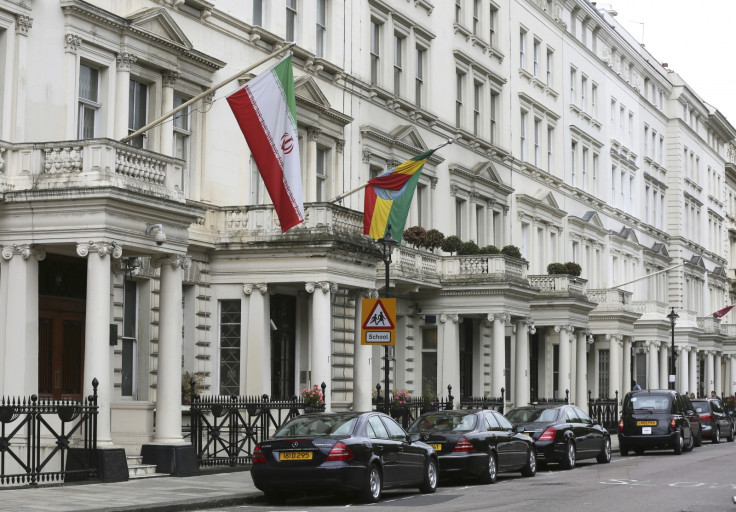Iranian embassy to re-open in London 35 years after terrorist siege

Iran's embassy to the UK in London, and the UK's embassy in Tehran, are both set to officially re-open today. The embassies are re-opening four years after a mob attacked the UK's embassy in Tehran, and 35 years after the famous siege of the Iranian Embassy in London.
The opening on the UK's embassy in Iran has already provoked outrage, after it was revealed that the building will on Bobby Sands Street. The street had been dedicated to former British Prime Minister Winston Churchill but was renamed after the famous IRA member and H Block hunger striker.
Twitter user @Short_Strand wrote : "I see the brits are reopening their embassy on Bobby Sands Street in Tehran this week."
I see the brits are reopening their embassy on Bobby Sands Street in Tehran this week. pic.twitter.com/nNPTyk0dnf
— Short Strand (@Short_Strand) August 20, 2015
In what could be seen as a public relations exercise, Foreign Secretary Philip Hammond is in the Iranian capital with a delegation of officials and business leaders who will be involved in the re-opening ceremony. This will be the first visit by a UK foreign secretary to Iran since 2003. The visit is to mark an improvement in relations between the Iran and the UK since Iran agreed a deal over its nuclear programme with the West.
Who was Bobby Sands?
Bobby Sands was a member of the Provisional Irish Republican Army (IRA) who died on hunger strike while imprisoned at HM Prison Maze in May 1981. He was the leader of the hunger strike in which Irish republican prisoners protested against the removal of Special Category Status and demanded that they be classed as political prisoners.
During the strike he was elected to the British Parliament as an anti-H-Block candidate. His death, along with those of nine other fellow prisoners on hunger strike, caused a resurgence in paramilitary IRA recruitment and brought the hunger strikers to the attention of the international media.
The visit comes after Iran reached a deal with six world powers to curb its nuclear programme. Despite this, yesterday (22 August) Iran announced the unveiling of a long-range surface-to-surface ballistic missile that can accurately pinpoint targets more than 300 miles away. Restrictions on the development of the missile were not part of the deal.
Hammond said the nuclear treaty and the election of President Hassan Rouhani in June 2013, who is said to want closer links with the West, had both been "important milestones" in forging better relations between the two countries.
He said: "In the first instance, we will want to ensure that the nuclear agreement is a success.
"Britain and Iran should also be ready to discuss the challenges we both face including terrorism, regional stability, the spread of Isil in Syria and Iraq, counter-narcotics and migration."
The embassy will initially be headed by a charge d'affaires, Ajay Sharma, but an ambassador is expected to be appointed in the coming months.
Diplomatic relations between the UK and Iran collapsed in 2011, when the UK embassy in Tehran and a separate diplomatic compound, were invaded by protestors linked to an Iranian government paramilitary group. The UK embassy was evacuated and closed down, and the staff of the Iranian embassy in London were expelled in protest.
Siege anniversary
The reopening of the Iranian embassy in London also comes four months after the 35th anniversary of the Iranian embassy siege.
On 30 April 1980, six Iranian-Arab terrorists took 26 hostages captive at the Iranian embassy in Hyde Park, London. The terrorists demanded that the Khūzestān Province in Iran be granted sovereignty.
The hostages were released on 5 May, after SAS troopers stormed the building. More than 30 troopers from the SAS stormed the embassy building from the roof, balcony and front and back doors, throwing grenades through the windows. One hostage had already died before the attack by the troops on the embassy.
© Copyright IBTimes 2025. All rights reserved.




















